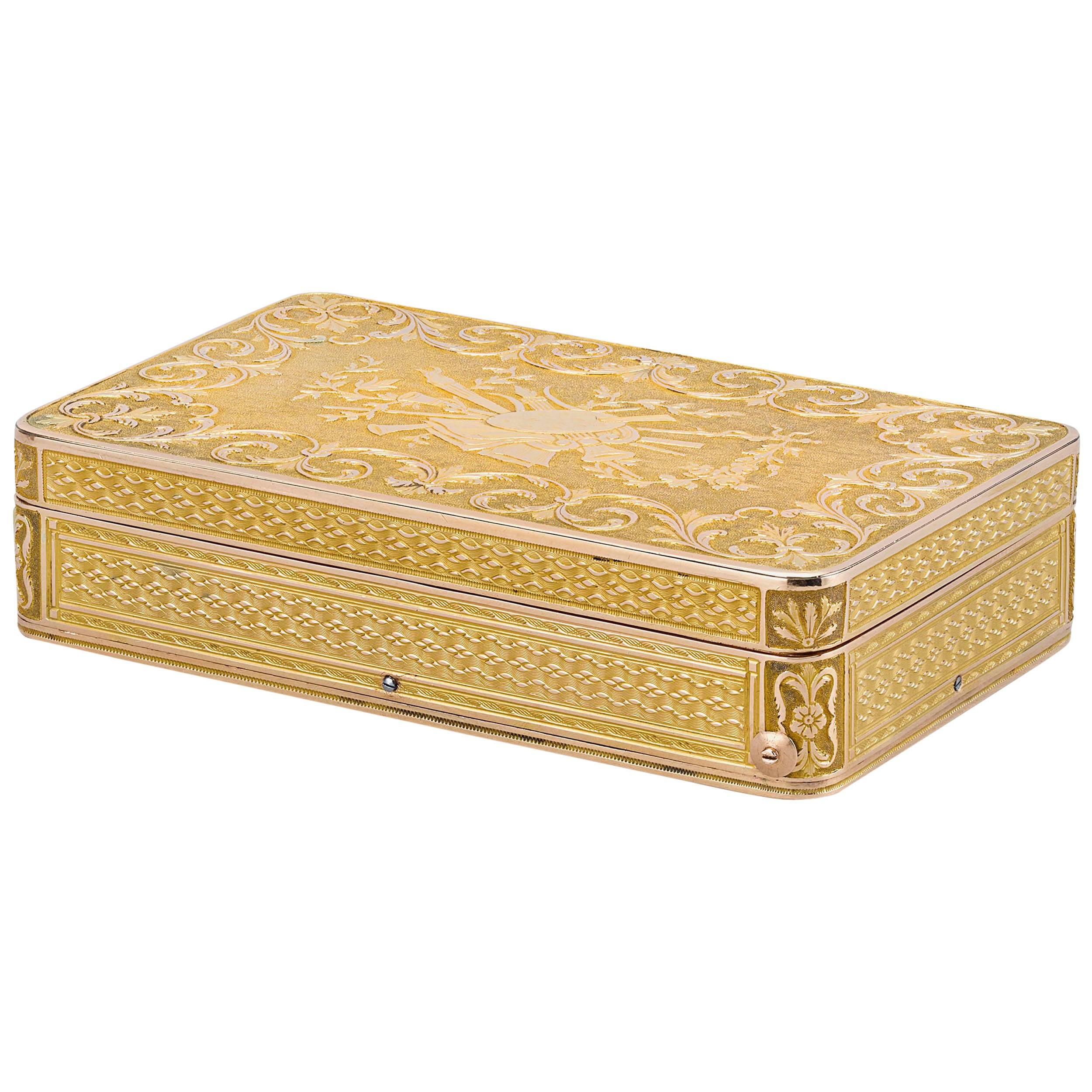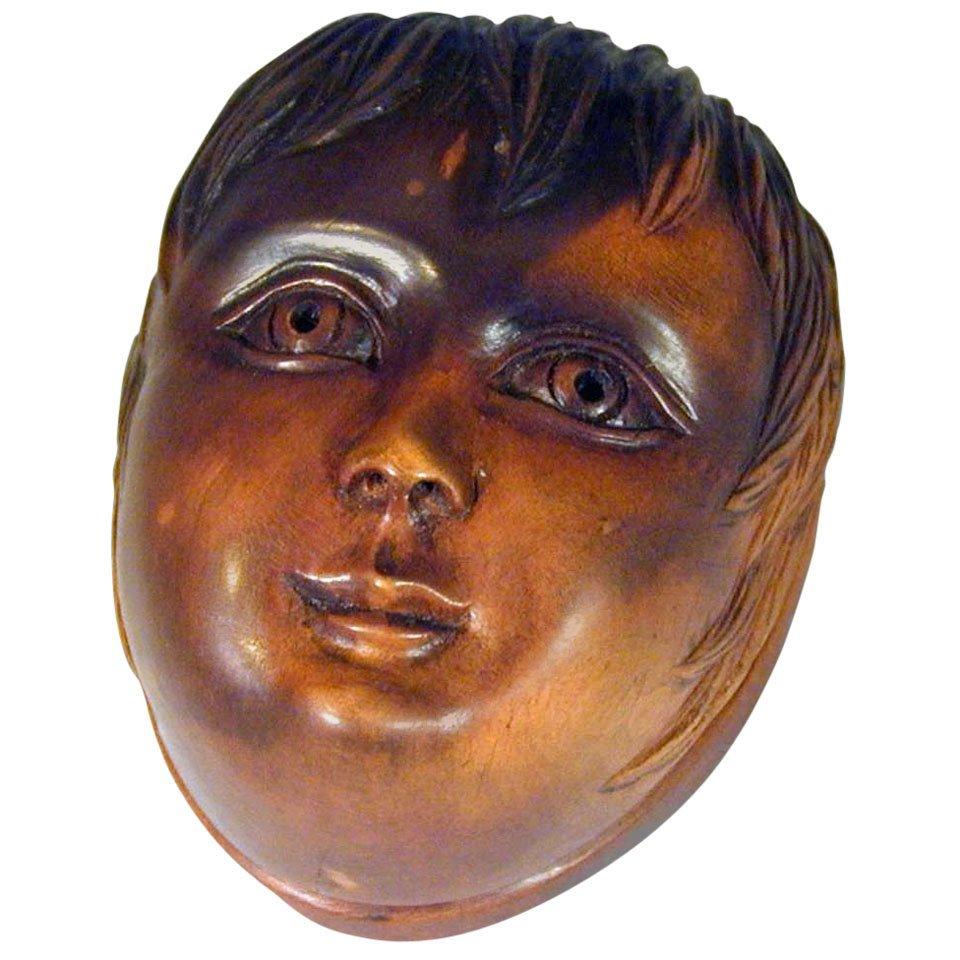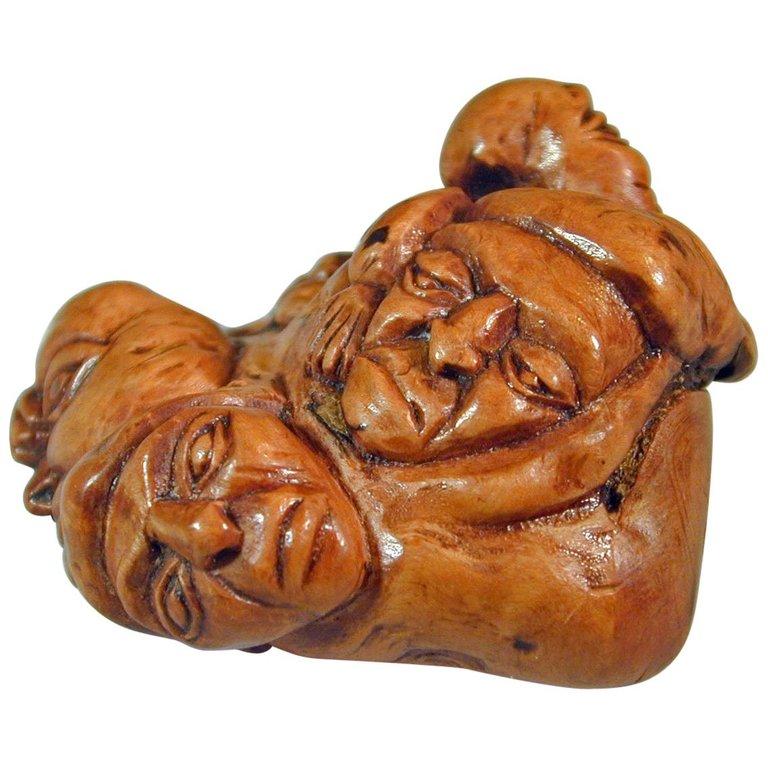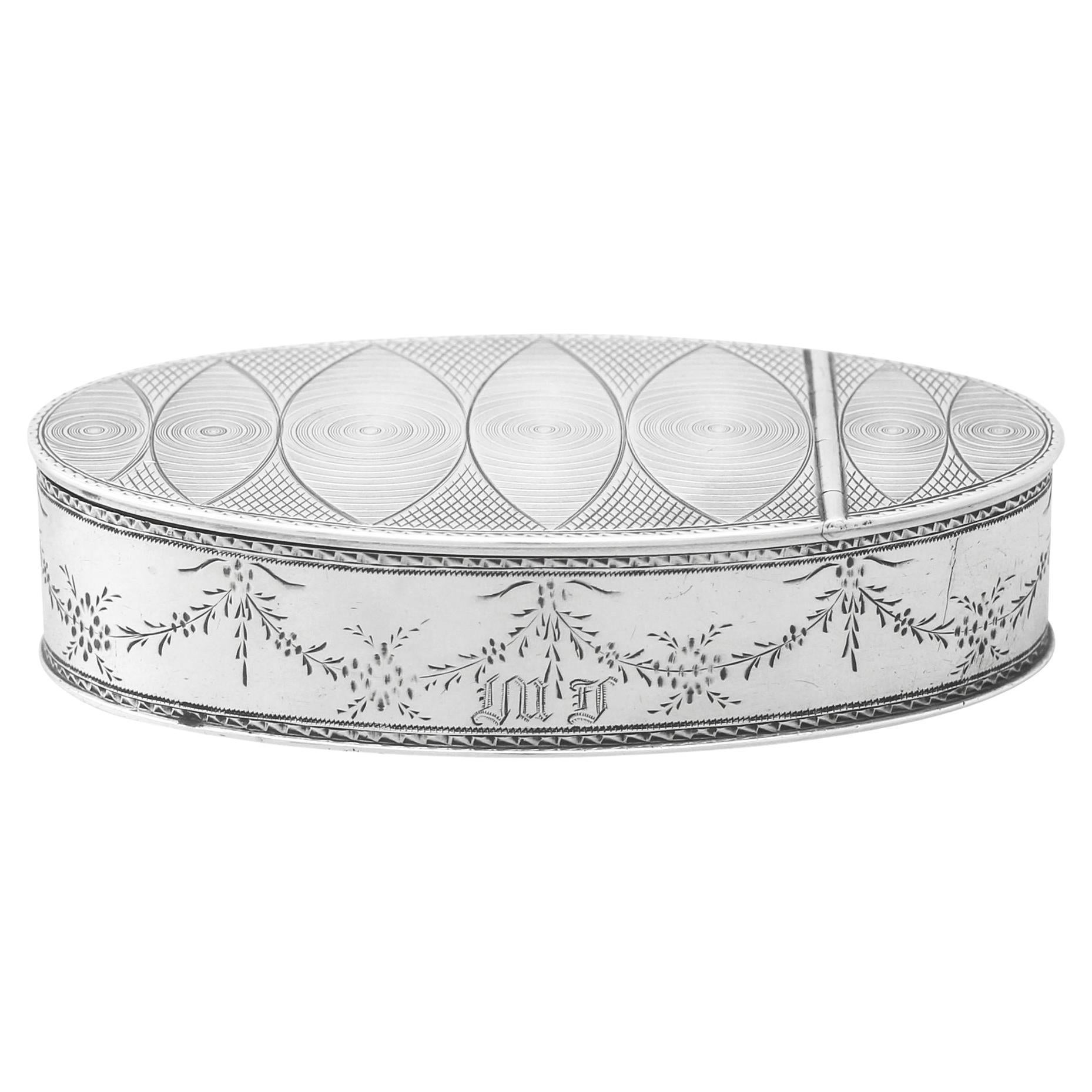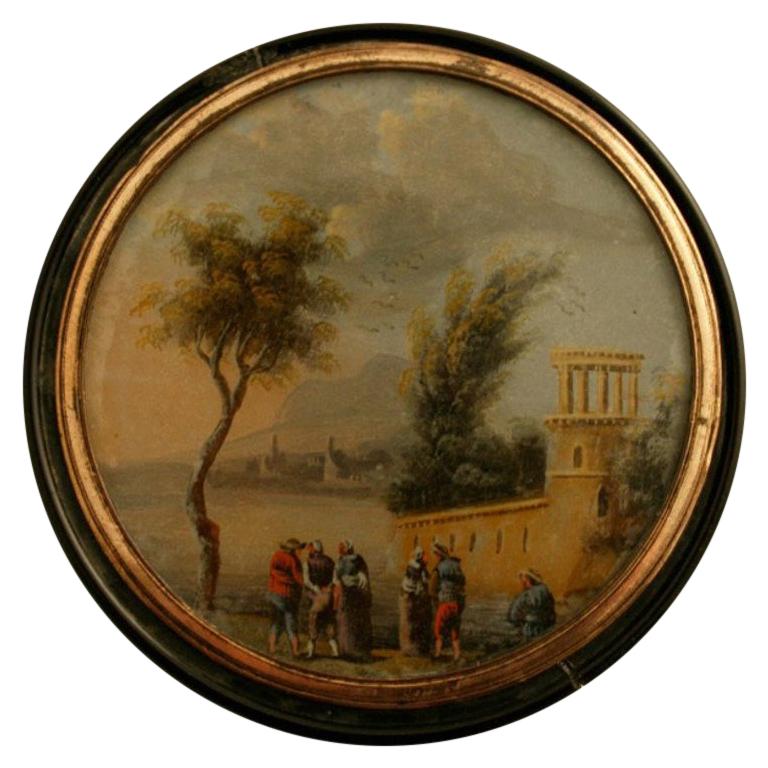Items Similar to Gold and Agate Snuff Box Belonging to Anne, First Duchess of Buccleuch
Want more images or videos?
Request additional images or videos from the seller
1 of 8
Gold and Agate Snuff Box Belonging to Anne, First Duchess of Buccleuch
About the Item
This oval gold snuff box is inscribed with a crest of ‘a stag trippant’ within mantling of upright ostrich plumes tied with a bow, all below a ducal coronet and above a cypher of the entwined initials ‘B.A.B.’ for Anne of Buccleuch. English, circa 1670.
Provenance: Anne, 1st Duchess of Buccleuch
Anne Scott, 1st Duchess of Buccleuch (1651-1732) was a wealthy Scottish peeress. After her father died when she was a few months old, and her sisters by the time she was 10, she inherited the family’s titles. She was married, at 12 years old, to James, 1st Duke of Monmouth, the eldest illegitimate son of Charles II, then 14. Following the king’s death in February 1685, James spearheaded an anti-Catholic revolt to depose the new king, James II, and claim the throne from his uncle. The brief Monmouth Rebellion ended in defeat and James, by then Duke of Monmouth and Buccleuch, was executed for treason. The Duchess had six children by Monmouth, and a further three by her second husband, Charles, 3rd Baron Cornwallis, whom she married in 1688. She died in 1732 and was succeeded by her grandson, Francis, Earl of Dalkeith.
The style of chasing used on this box is very reminiscent of a signed piece in the Gilbert Collection, currently on loan to the Victoria and Albert Museum, London. The Gilbert piece, English from around 1720, is signed by the chaser known only by his surname, Burel. The Gilbert example also incorporates a similar hunting scene and, perhaps more significantly, very similar strapwork framing the hunting scene in the frieze. As a result of this, it is appropriate to attribute our piece to the Burel workshop although this box dates to some time earlier when Anne of Buccleuch came of age and gave birth to her first child.
We are very grateful to Angela Howard for her work on the heraldry on this box and her full research, including references to other examples featuring similar mantling and of a contemporary date, is available upon request.
- Dimensions:Height: 2.75 in (6.99 cm)Width: 2 in (5.08 cm)Depth: 0.1 in (2.54 mm)
- Materials and Techniques:
- Place of Origin:
- Period:1670-1679
- Date of Manufacture:circa 1670
- Condition:Wear consistent with age and use.
- Seller Location:Lymington, GB
- Reference Number:1stDibs: LU973029425712
About the Seller
5.0
Recognized Seller
These prestigious sellers are industry leaders and represent the highest echelon for item quality and design.
Established in 1982
1stDibs seller since 2013
106 sales on 1stDibs
Typical response time: 2 hours
Associations
LAPADA - The Association of Arts & Antiques Dealers
- ShippingRetrieving quote...Ships From: Lymington, United Kingdom
- Return PolicyA return for this item may be initiated within 14 days of delivery.
More From This SellerView All
- A black oak snuff box made from timber recovered from H.M.S. Boyne, sunk 1795, rLocated in Lymington, HampshireA black oak snuff box made from timber recovered from H.M.S. Boyne, sunk 1795, raised 1833, of circular form with turned lid and base, the lid with printed description of Boyne’s car...Category
Antique 1830s English Nautical Objects
MaterialsOak
- A Meiji period cloisonné box and cover, Ando CompanyLocated in Lymington, HampshireA Meiji period cloisonné box and cover, Ando Company, worked in silver wire and coloured enamels with an array of brightly coloured flowers, reserved against a rich midnight-blue gro...Category
20th Century Japanese Meiji Decorative Boxes
MaterialsCeramic
- A Taisho period cloisonné box and cover with a watermill and Mount FujiLocated in Lymington, HampshireA Taisho period cloisonné box and cover with a watermill and Mount Fuji, worked in wire and coloured musen(wireless) enamels with a watermill beneath an imposing view of Mount Fuji, ...Category
Early 20th Century Japanese Decorative Boxes
MaterialsWire
- A Meiji period cloisonné box and cover with sparrows, prunus and bambooLocated in Lymington, HampshireA Meiji period cloisonné box and cover with sparrows, prunus and bamboo, the rectangular box worked in gold and silver wire and coloured enamels with birds amongst a blossoming tree ...Category
Antique 19th Century Japanese Meiji Decorative Boxes
MaterialsCeramic
- A large Edwardian shaped rectangular silver and tortoiseshell piqué boxLocated in Lymington, HampshireA large Edwardian shaped rectangular silver and tortoiseshell piqué box, the hinged lid with a dainty basket suspended from a bow with long ribbons entwined with flowering tendrils, ...Category
Antique Early 1900s English Edwardian Decorative Boxes
MaterialsSilver
- A small Showa period cloisonné box with a single branch of blossomLocated in Lymington, HampshireA small Showa period cloisonné box with a single branch of blossom, worked in wire and coloured enamels with a blossoming plum branch, reserved against a pale-blue ground, with silve...Category
20th Century Japanese Showa Decorative Boxes
MaterialsCeramic
You May Also Like
- Swiss Gold Musical Snuff BoxLocated in New Orleans, LAThis special and important Swiss gold music box is chased and engraved with a set of musical instruments surrounded by elaborate swirls of ornate foliage. Embossed with a delightful braided gold design, the two-compartment box features an exquisite oval agate key, which opens a recessed lock in the base of the box. Such a box would have been a prized possession and would have been able to fit neatly into a gentleman’s waistcoat pocket. Ingenious miniature portable devices, musical snuff boxes...Category
Antique 19th Century Swiss Other Snuff Boxes and Tobacco Boxes
MaterialsGold
- Antique Snuff Box of a Head of a BoyLocated in Baltimore, MDThe charming boy looks at you with a sweet smile, his container full of snuff to make you happy. He is carved of fruitwood, the lid lined with tortoise shell.Category
Antique 19th Century British Decorative Boxes
MaterialsMahogany, Tortoise Shell
- Antique Five Faces Snuff BoxLocated in Baltimore, MDUnique Georgian snuff box depicting five faces and inspired by Japanese netsuke designs. Carved from a tree root, it is fitted with a lidded metal compartment...Category
Antique 19th Century British Decorative Boxes
MaterialsBase Metal
- Antique Austrian Silver Table Snuff BoxLocated in Jesmond, Newcastle Upon TyneAn exceptional, fine and impressive antique Austrian silver table snuff box; an addition to our ornamental silverware collection. This excep...Category
Antique Early 1900s Austrian Snuff Boxes and Tobacco Boxes
MaterialsSterling Silver
- German 18th Century Silver And Hardwood Snuff BoxLocated in Copenhagen, KWonderful carved German or Austrian snuff box hunting motive and silver mounting. Carved to fit "hand in glove." Provenance: Exhibited at the Dome M...Category
Antique Mid-18th Century German Baroque Tobacco Accessories
MaterialsSilver
- Admiral Lord Nelson's Tortoiseshell Snuff Box with Certificate of AuthenticityLocated in Jersey, GB- A hugely rare and intimate piece of British history: Admiral Horatio Lord Nelson's snuff box - Admiral Horatio Lord Nelson (1758–1805) is one of the most celebrated figures in British history, best remembered for his heroic efforts during the Napoleonic wars. Nelson's career as a naval officer saw him lead the British fleet to several victories, during which he suffered injuries, including the loss of his right arm and the sight in his right eye. His most famous victory came in October 1805 at the Battle of Trafalgar, in which the Royal Navy decimated the combined fleets of the French and Spanish navies. Prior to the battle, Nelson sent out the famous message "England expects that every man will do his duty". Tragically, he was shot by a French sniper and died on board his ship the HMS Victory mid battle. His body was returned to England where he was granted a state funeral, and numerous monuments were erected in his honor, including Nelson’s Column in Trafalgar Square, London. This tortoiseshell composition snuff box was originally owned by Lord Nelson, and features a miniature watercolor scene of the Amalfi coast on the top. The box was gifted by Nelson to his personal secretary George Unwin, during a dinner party in Sicily in late 1798 or early 1799 which was also attended by Nelson's mistress, Emma, Lady Hamilton. Nelson had first met Hamilton in 1793 and the pair were reunited in 1798 following the Battle of the Nile. Having been severely injured, Nelson recuperated in Naples, during which time he was nursed back to health by Lady Emma and her elderly husband, Sir William Hamilton. It was during this period that Nelson and Hamilton began their famous love affair, which lasted until Nelson's death at the Battle of Trafalgar in 1805. It seems highly possible that Nelson gave this gift to Unwin as a show of generosity, in an attempt to impress his mistress over dinner. The snuff box is offered along with a manuscript letter by Unwin's son, George, which reads in full: "My Father had either lost his own snuff box on going ashore or in some shop in Palermo and upon mentioning the circumstances at Lady Hamilton’s table where Lord Nelson was one of the party his Lordship...Category
Antique Late 18th Century European Rococo Historical Memorabilia
MaterialsTortoise Shell
